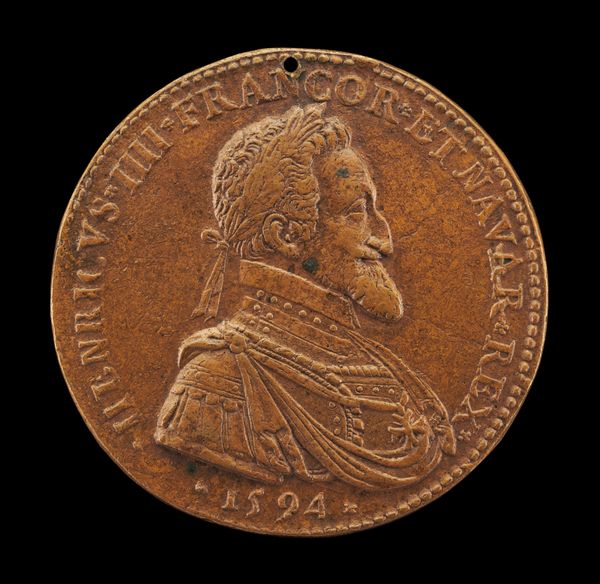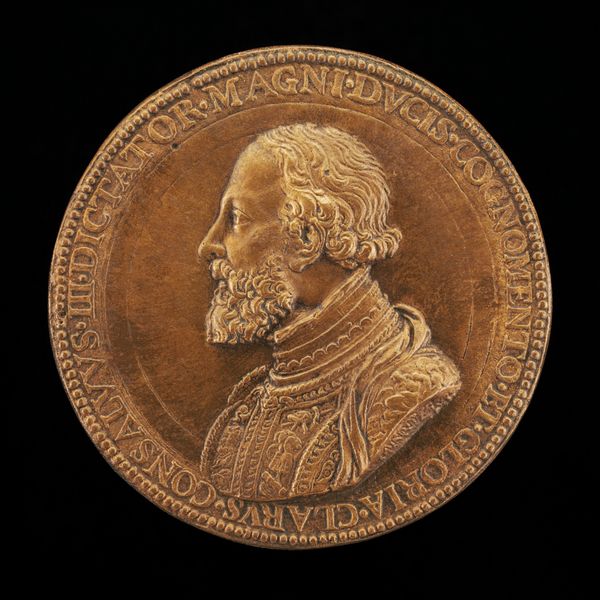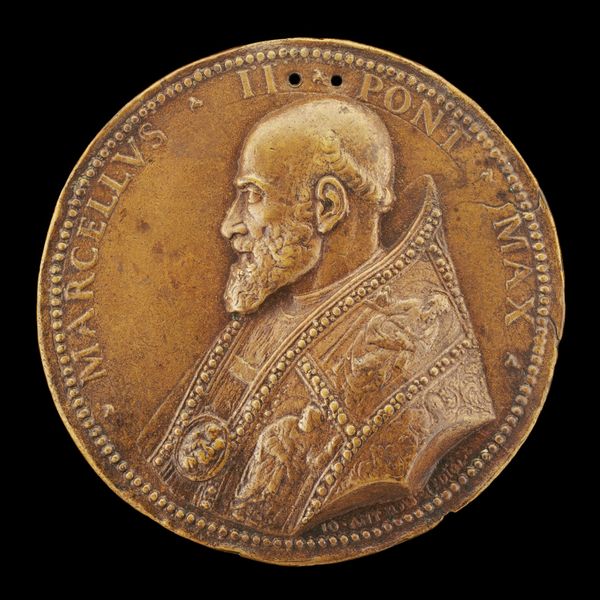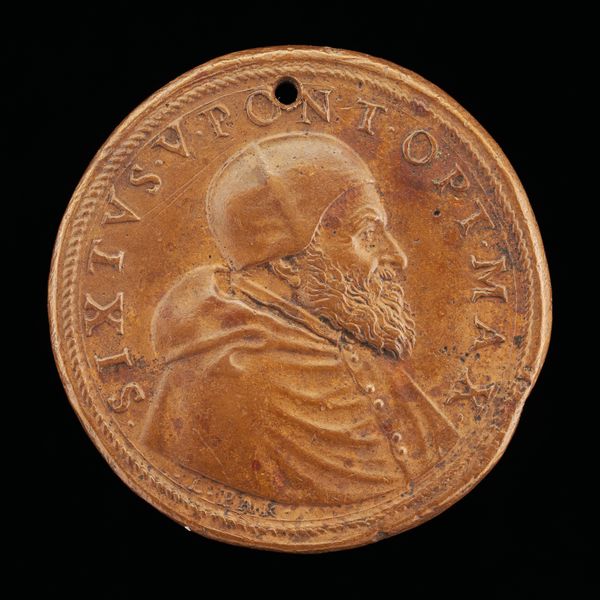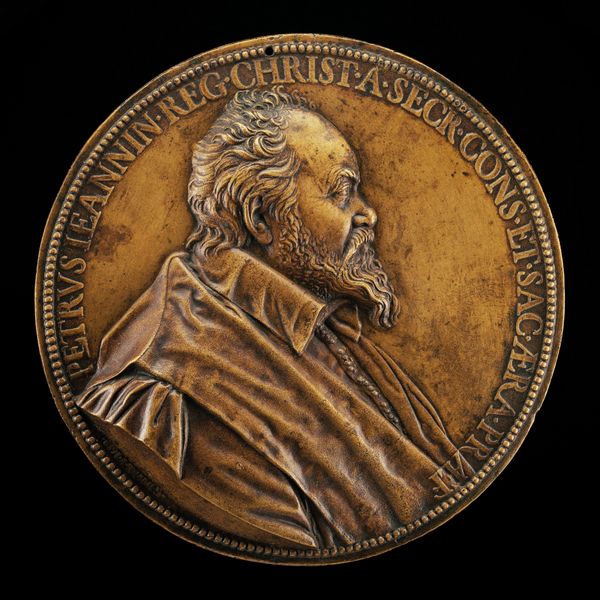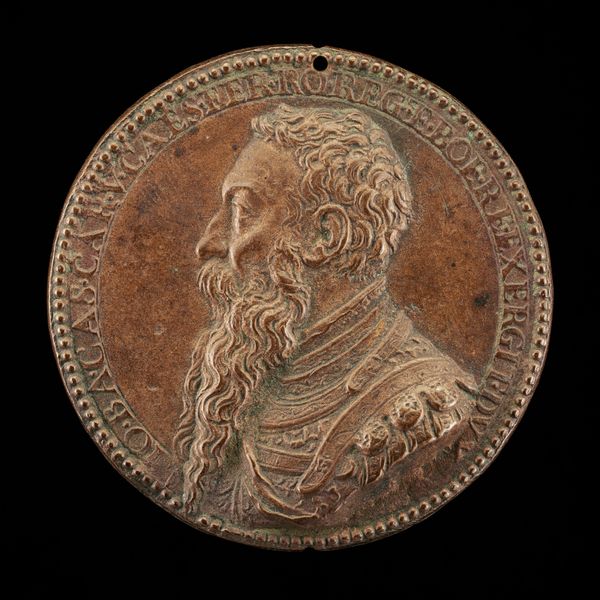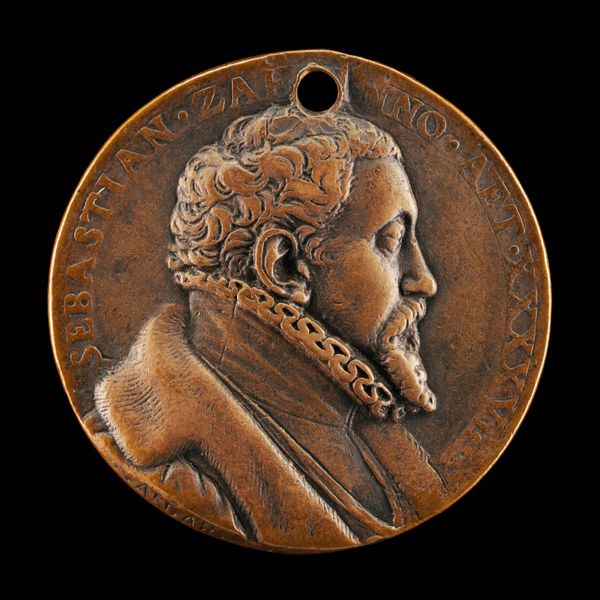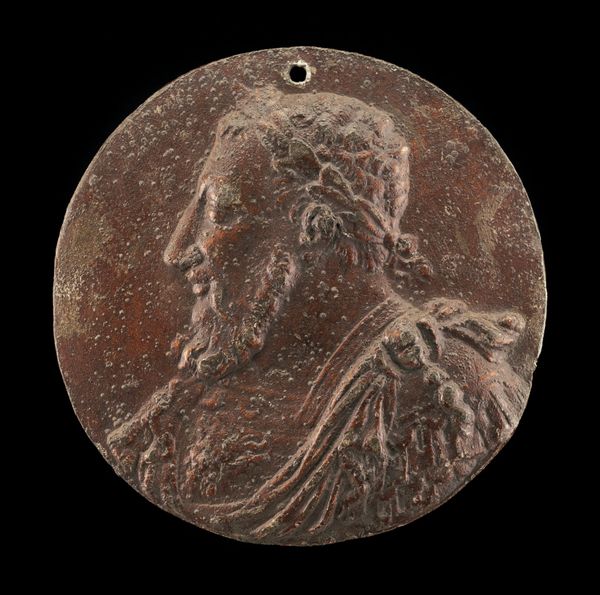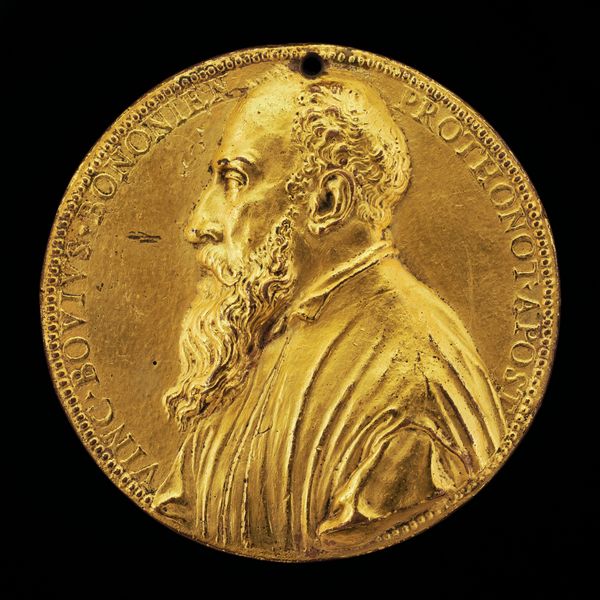![Pomponne de Bellièvre, 1529-1607, Chancellor of France 1599-1605 [obverse] by Nicolas-Gabriel Jacquet](/_next/image?url=https%3A%2F%2Fd2w8kbdekdi1gv.cloudfront.net%2FeyJidWNrZXQiOiAiYXJ0ZXJhLWltYWdlcy1idWNrZXQiLCAia2V5IjogImFydHdvcmtzLzAyNzdhMjRlLTUzODYtNDZiYy04MDViLTkyMmExOWNlOTcxMi8wMjc3YTI0ZS01Mzg2LTQ2YmMtODA1Yi05MjJhMTljZTk3MTJfZnVsbC5qcGciLCAiZWRpdHMiOiB7InJlc2l6ZSI6IHsid2lkdGgiOiAxOTIwLCAiaGVpZ2h0IjogMTkyMCwgImZpdCI6ICJpbnNpZGUifX19&w=3840&q=75)
Pomponne de Bellièvre, 1529-1607, Chancellor of France 1599-1605 [obverse] 1601
0:00
0:00
metal, relief, sculpture
#
portrait
#
medal
#
baroque
#
metal
#
sculpture
#
relief
#
sculpture
Dimensions: overall (diameter): 5.56 cm (2 3/16 in.) gross weight: 41.97 gr (0.093 lb.) axis: 12:00
Copyright: National Gallery of Art: CC0 1.0
Curator: Examining this medal, made of metal in 1601, we see a portrait of Pomponne de Bellièvre, who served as Chancellor of France. It’s attributed to Nicolas-Gabriel Jacquet. What strikes you first about it? Editor: Its somber tone, undoubtedly. The bronze patina lends a grave solemnity to Bellièvre’s visage, hinting at the heavy burdens of his office. Do you perceive similar emotive intent? Curator: Indeed, the imagery is deliberate. Consider the laurel wreath— a symbol of honor and triumph— subtly incorporated around the edges. Jacquet uses recognizable symbols to publicly cement Bellièvre’s legacy and celebrate his achievements in service of France. Editor: Public image was everything, wasn't it? The Baroque style adds to this sense of carefully constructed authority, projecting an image of stability during a politically turbulent time in France. The elaborate chain around his neck also conveys that Bellièvre’s authority came from established power structures. Curator: Absolutely. The medal itself, as a portable object, speaks to the distribution and circulation of power. Being made of metal allows a more precise transfer of the subject and it also lends a feel of timelessness. These were important components in communicating social status at that time. It would have been displayed, exchanged among elites, thus physically embodying and reinforcing social bonds. Editor: Yes, the choice of metal echoes a desire for permanence but what of its scale? It could be carried and treasured, thus linking personal appreciation with state power. This isn't just about commemorating an individual, it is about subtly enforcing a system. Curator: Precisely, we are witnessing a potent tool of statecraft, designed to influence opinions and consolidate power in 17th-century France. Its beauty is inseparable from its socio-political context. Editor: It makes you think about the careful construction of authority then, and how that contrasts, or doesn't, with representations of leadership today. Curator: Indeed, understanding pieces like these allows us to investigate the complex choreography of imagery and power throughout history.
Comments
No comments
Be the first to comment and join the conversation on the ultimate creative platform.

